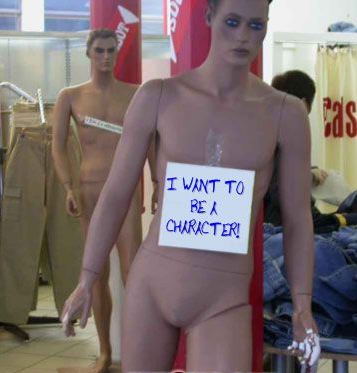1. Creating Characters
So, an outside source to stimulate and inspire—but there has to be some answering echo in you. Something that would never appear in your real-life behaviour, perhaps, but still a potential. The vitality and inner feel of a character has to come from you.
A closely-observed character may be a good character, but a great character is created from the inside out—like the way we actually live our lives. Patterns of behaviour, body-language, manner of speech all flow from that inner flame.
 I’m not against observation and recording, but I think it’s more relevant to semi-autobiographical writing than genre fiction. I’m not interested in making a copy of real life. (Why bother? Isn’t there enough of it around all the time?) What matters in genre fiction is being true to the inner flame. I’m not against observation and recording, but I think it’s more relevant to semi-autobiographical writing than genre fiction. I’m not interested in making a copy of real life. (Why bother? Isn’t there enough of it around all the time?) What matters in genre fiction is being true to the inner flame.
I enjoy reading and writing characters who are more colourful, more alive, more high-energy than average people in everyday real life. I’ve moved from the gothic grotesques of The Vicar of Morbing Vyle and The Black Crusade to more realistic characters in recent projects. But I hope that even my gothic grotesques manage to be 3–dimensional, and my more realistic characters also manage to be vivid and intense.
For me, a caricature is extreme and predictable, whereas a 3-dimensional character may be extreme but is not predictable. 3-dimensional characters interact in new ways and respond to new circumstances; they can grow and surprise. But they can also be crazy, murderous, abject, grandiose, larger than life …
One thing that will always quench a character’s inner flame is pre-judgement by the author. If you decide from the start that this particular person is morally or politically wrong, then you lock them into a box. Characters need space to breathe. They need empathy first and judgement later—if at all.
Personally, I like to let readers form their own judgements of approval or disapproval. And, yes, I like to spring a few surprise developments, when seemingly bad characters show a good side, and vice versa. Not because nobody’s totally good or bad in real life—if that’s your rationale, your characters may just end up bland. A total baddie can work in a fictional world.
No. I like surprise developments because they make for good reading. My goal is to write a novel that takes the reader on an emotional roller coaster ride—which includes changing feelings towards at least some of the main characters.
|

